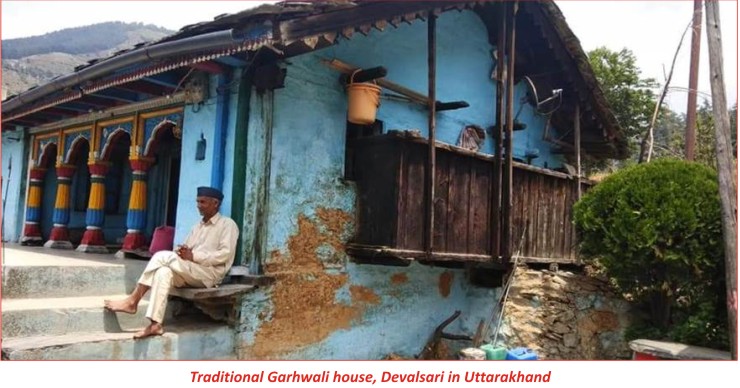Slow Tourism Generating
Livelihoods
in Remote Uttarakhand
Tourism
is a concept so well rooted in the minds of those practicing in the industry
and those at its receiving end that it is difficult to challenge its
definition. By definition, tourism has become a fast-paced industry which is
a list of check boxes when people are on a visit. These boxes are nothing
but limits to the horizons of our minds that are blocking our view of the
goodness of slow tourism. Slow tourism involves generating minimum carbon
footprint and walking or exploring the lesser known aspects with
communities.

Uttarakhand is dotted with picturesque
settlements, several of which are being gripped by the twin evils of lack of
infrastructure and hence migration. Slow tourism as a ground reality can be
a potent tool to prevent migration in several areas of the state. For
example, at a distance of about 60 kms from Dehradun lies the village of
Matogi, nestled on the boundary of the Tons river. Matogi at present has
about eight families sustaining on minor agricultural activities with some
support from extended families living in nearby urban settlements. A chance
visit to Matogi revealed its location as the beginning point of the trek to
the popular Bhadraj Temple. Bhadraj, the abode of Lord Balram, is generally
approached from the other side of the mountain in the Mussoorie range and
Matogi has been out from people’s memories for a long time. The visit soon
culminated in a walk which comprised of about 135 people who not only
trekked from Matogi to Bhadraj but also engaged the village residents in
preparing meals, all served in cutlery brought by the walkers. The income
thus generated was surprisingly sufficient for the host family to survive
for the next three months. Word soon spread and the local youth is now
willing to explore the trek as a livelihood option. Similar is the case with
the village of Devalsari, a beautiful Deodar forest perched at an altitude
of about 6000 feet. Devalsari can be approached by road and is a scenic
two-hour drive from the popular hill station of Mussoorie. The place has
witnessed a community initiative by the name of Devalsari Prakriti Prahari
which began as an eco-tourism effort. Local panchayat was engaged on issues
of afforestation and tourism. Devalsari is a relevant example of how slow
tourism can benefit the community and also bring them closer in cooperative
tasks. The Devalsari community has now begun receiving tourists throughout
the year and has engaged several local men and women in cooking, trekking,
birding and other activities. Clamoring to get away from the urban chaos,
visitors are now thronging the hamlet and enjoying their stay as arranged by
the community with no extra demands mounted since the site has been
projected as a community-led site of slow tourism. While basic
infrastructural amenities like roads remain a challenge in some pockets,
slow tourism has began becoming admired in many parts of India and can be a
potent tool for development.
■
Sana Mehra
sanamehra18@yahoo.com